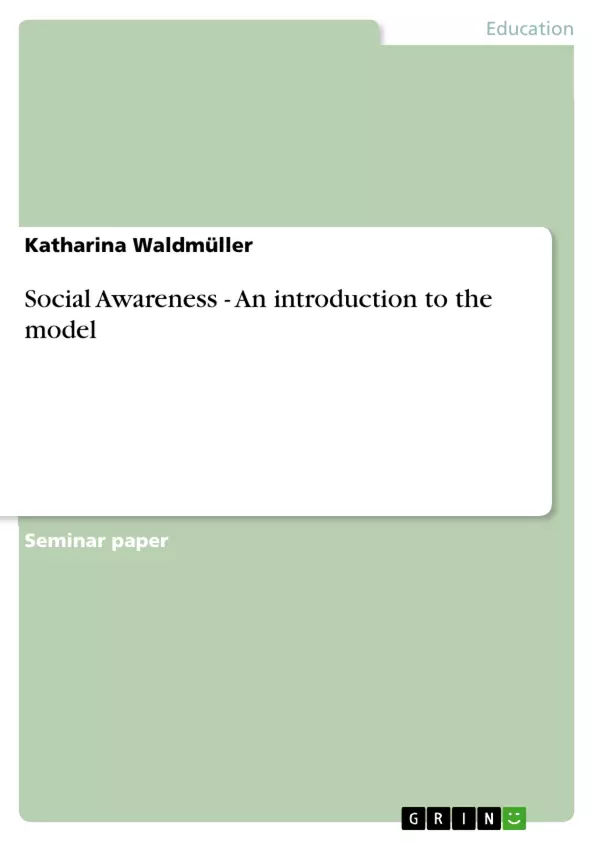We are living in an age of diversity. The roles of teachers, counselors and team leaders have been expanded to include the consideration of the cultural identities of students, clients and team members. Teachers, counselors and team leaders have a responsibilty to increase their awareness, knowledge, and skills so that students, clients and team members are taught and counseled with approaches that recognize the influence of cultural group membership. If the responsible persons do not recognize the influence of cultural group membership, their subordinates can be expected to profit only minimally from interactions with them.
Therefore, developing multicultural awareness is essential for all counselors to accurately interpret the meaning of cultural similarities and differences. Various theories and models have been developed to explain these changing social conditions. Most of the theories are tailored for business management only. A comprehensive theory proposed by Earley and Gibson, though, incorporates a dynamic, multilevel view of teams. It includes perceptions from various research fields and opens new dimensions. This theory will be explained in chapter 2. Chapter 3 will concentrate on one individual element of the theory, namely social awareness. This term will be commented on from several viewpoints. Theories that the authors used to explain social awareness will be introduced. Chapter 4 will contemplate social awareness in the model context. It will reflect on how various kinds of team leaders can utilize the model of Earley and Gibson (2002) according to team disposition (i.e. how the team is arranged, is it a loose or a tight structure). In chapter 5 a critical approach on the model will be adapted. Chapter 6 will make a proposal as to how this model can be applied to promote social awareness. Therefore the simulation game Ecotonos will be introduced and it will be questioned on its suitability for this purpose. Finally, chapter 7 is a short summary of the results and a view of possible future developments.
Table of Contents
- INTRODUCTION.
- THE MODEL PROPOSED BY EARLEY & GIBSON
- Introducing definitions and general description....
- Individual and group elements
- Linking processes.
- Catalysts.....
- SOCIAL AWARENESS
- Definition
- The concept of field dependence-independence
- The concept of high- versus low-context cultures
- SOCIAL AWARENESS IN THE MODEL CONTEXT
- Linking processes to group elements
- Influences of team disposition to social awareness.
- What team leaders can learn from the model.
- A CRITICAL APPRECIATION OF THE MODEL.
- Advantages of the model...
- Critical notes on the model.......
- APPLICATION IN PRACTICAL EXPERIENCE.
- Ecotonos: A Multicultural Problem-Solving Simulation ..
- History and Rationale of Ecotonos..
- The Development Process..
- Procedure for Using Ecotonos......
- Contexts in which Ecotonos can be used
- The suitability of Ecotonos to promote social awareness.
- Ecotonos: A Multicultural Problem-Solving Simulation ..
- SYNTHESIS
Objectives and Key Themes
This seminar paper aims to examine the importance of social awareness within multicultural work teams. It explores the model proposed by Earley & Gibson (2002), which provides a comprehensive framework for understanding the dynamics of such teams. The paper delves into the concept of social awareness, its various dimensions, and how it can be integrated into team leadership and development.
- The importance of social awareness in multicultural work teams
- The Earley & Gibson model for understanding multicultural team dynamics
- Different theoretical perspectives on social awareness
- Practical applications of the model for fostering social awareness in teams
- Critical analysis and potential limitations of the Earley & Gibson model
Chapter Summaries
- Introduction: This chapter sets the context for the paper, highlighting the increasing importance of multicultural awareness in today's diverse world. It emphasizes the need for effective team leadership that acknowledges and responds to cultural differences. This chapter introduces the Earley & Gibson model as a comprehensive framework for understanding multicultural teams and outlines the structure of the paper.
- The Model Proposed by Earley & Gibson: This chapter presents the core elements of the Earley & Gibson model, including individual and group elements, linking processes, and catalysts. It defines key terms such as group, team, multinational team, and culture, providing a foundation for understanding the model's framework.
- Social Awareness: This chapter focuses on one key individual element of the Earley & Gibson model: social awareness. It examines the definition of social awareness and explores related concepts like field dependence-independence and high- versus low-context cultures, providing a comprehensive theoretical understanding of this important element.
- Social Awareness in the Model Context: This chapter explores the relationship between social awareness and other elements within the Earley & Gibson model. It analyzes how social awareness interacts with linking processes and the impact of team disposition on social awareness. Additionally, it provides insights for team leaders on how to effectively utilize the model to promote social awareness.
- A Critical Appreciation of the Model: This chapter examines the advantages and limitations of the Earley & Gibson model. It provides a critical perspective on the model's strengths and potential weaknesses, offering a balanced assessment of its usefulness in understanding and promoting social awareness in multicultural teams.
- Application in Practical Experience: This chapter introduces Ecotonos, a multicultural problem-solving simulation game, as a practical tool for fostering social awareness. It explores the history, rationale, development process, and potential contexts for using Ecotonos. The chapter then examines the suitability of Ecotonos as a means of promoting social awareness within the framework of the Earley & Gibson model.
Keywords
This seminar paper focuses on the key concepts of social awareness, multicultural work teams, team leadership, and the Earley & Gibson model. The analysis explores the relationship between individual and group elements, linking processes, and catalysts within a multicultural team context. It examines the role of social awareness in promoting effective team functioning and the practical application of the model through simulations like Ecotonos.
- Quote paper
- Katharina Waldmüller (Author), 2005, Social Awareness - An introduction to the model, Munich, GRIN Verlag, https://www.grin.com/document/93083



